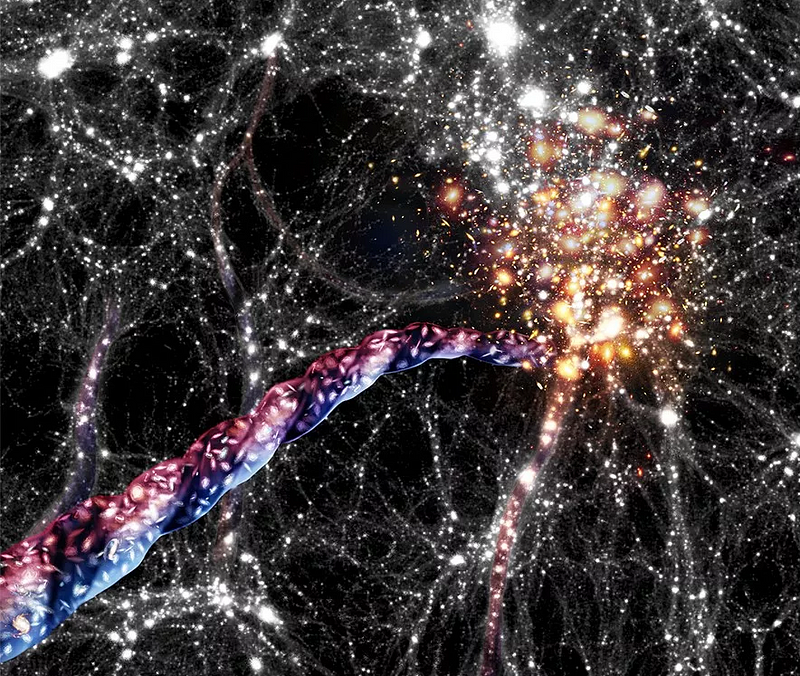Unraveling the Mystery of Spinning Cosmic Filaments
Written on
Chapter 1: A Cosmic Enigma
What is driving the rotation of the universe's largest known cosmic structures? Astronomers are diligently exploring the origins of these vast tendrils of galaxies, some stretching up to hundreds of millions of light-years. Each new discovery challenges our existing scientific frameworks and enhances our comprehension of the cosmos.
Last year, researchers identified an extraordinary cosmic structure named the "South Pole Wall," which spans an impressive 1.4 billion light-years and contains thousands of galaxies. The discovery of the universe's largest known spinning structures has left many astonished. While celestial bodies such as planets, stars, and galaxies exhibit rotation, the presence of extensive galactic tendrils rotating across vast distances is highly unusual. The sheer scale of the universe is well recognized, yet findings like this prompt further inquiry and explanation.
The phenomenon of rotation on such an immense scale had never been documented until now. A collaborative research effort involving the Leibniz Institute for Astrophysics Potsdam (AIP), alongside scientists from China and Estonia, revealed a vast cosmic web of galaxies displaying this intriguing spinning behavior.
Section 1.1: The Nature of Cosmic Filaments

"Despite their slenderness, resembling long cylinders comparable to pencils — extending hundreds of millions of light-years in length but only a few million light-years in diameter — these incredible tendrils of matter exhibit rotation. Such a phenomenon has never been recorded at this scale."
~ Noam Libeskind, Co-Author of the Study
The cosmic filaments discussed in this research represent colossal bridges of galaxies and dark matter that interconnect galaxy clusters. They guide galaxies toward larger clusters located at their ends. By utilizing data from the Sloan Digital Sky Survey, the research team analyzed over 17,000 filaments and determined that these structures rotate around their central axes.
Subsection 1.1.1: New Insights into Cosmic Evolution

This revelation challenges previous theories regarding the formation of massive matter sheets in the aftermath of the Big Bang, which later fragmented into the filaments of the cosmic web. During their observations, the astronomers noted speeds of up to 223,700 mph (360,000 kph) at which galaxies spun around the hollow centers of these tendrils.
Section 1.2: The Question of Rotation
As for the pressing question of why these colossal cosmic filaments rotate, astronomers suggest that this spin may not have originated from the Big Bang. Instead, they propose that the rotation likely began later in the universe's timeline as these structures formed.
Chapter 2: Looking to the Future
To unravel the origins of this filament spin, scientists will employ computer simulations. These simulations aim to deepen our understanding of how matter behaves on such an astronomical scale. The complete findings of this research have been published in the Journal of Nature Astronomy.

Stay updated with the latest discoveries — Join my mailing list.